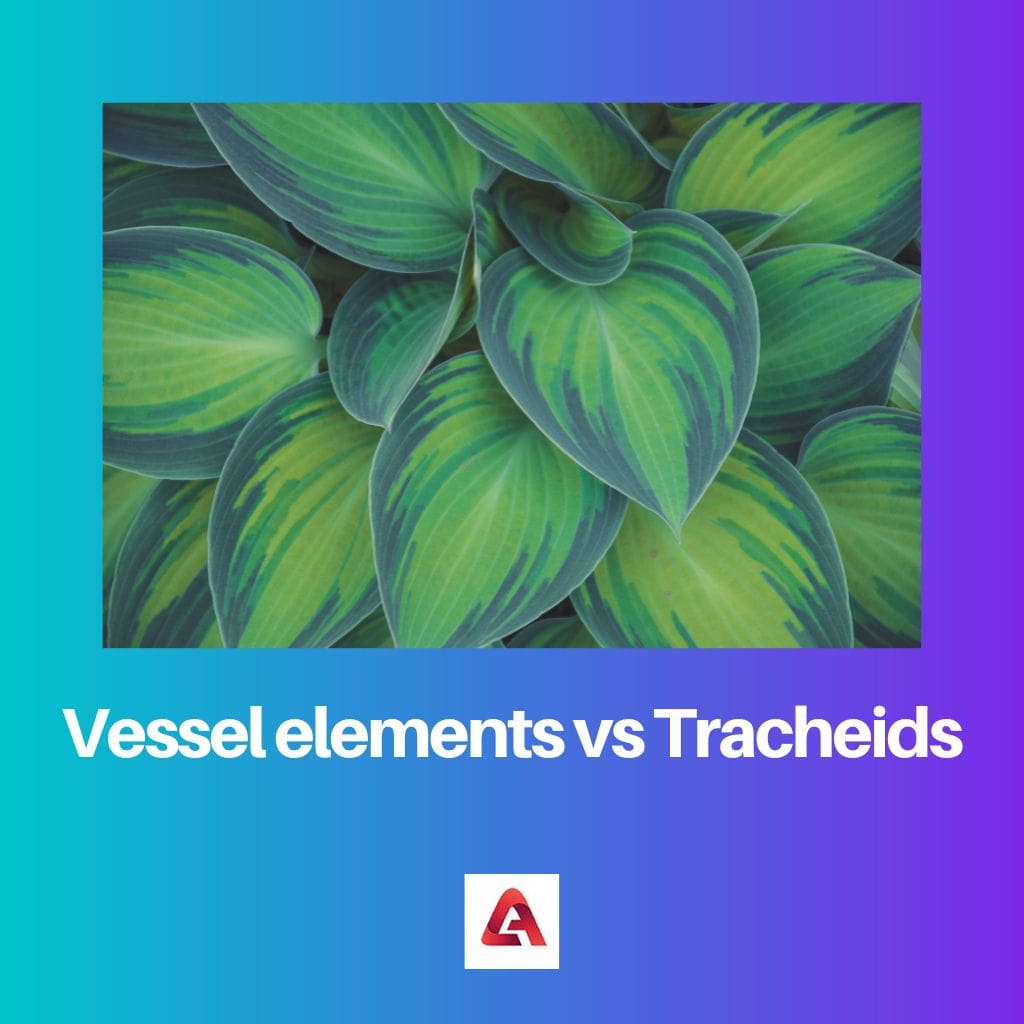Every living organism needs food, water, nutrients and minerals to survive. Similarly, plants also need food, water and nutrients to survive.
A type of tissue present in plants responsible for the conduction of food and water is Xylem. Xylem tissues transport minerals and water to all parts of the plant with the help of tracheary elements.
Key Takeaways
- Vessel elements are short, wide cells found in the xylem of angiosperms (flowering plants), which transport water and dissolved minerals from the roots to the rest of the plant and are connected end-to-end to continuous form tubes called vessels.
- Tracheids are elongated, tapering cells also found in the xylem but present in both angiosperms and gymnosperms (non-flowering plants), which serve a similar function as vessel elements but are less efficient due to their narrow shape and lack of direct connections.
- Both vessel elements and tracheids play a role in water and nutrient transport in plants. Still, vessel elements are exclusive to angiosperms and form more efficient continuous tubes, while tracheids are found in both angiosperms and gymnosperms but have a less efficient structure for transport.
Vessel Elements vs Tracheids
Vessel elements are specialized water-conducting cells arranged end-to-end to form a long, continuous pipe-like structure. Tracheids are longer and narrower water-conducting cells found in gymnosperms and angiosperms, but are less efficient at conducting water than vessel elements.

Vessels are the tissues in angiosperms for the conduction of minerals and water. These are tubular dead cells with thick walls. Vessels are highly developed tissues.
Comparison Table
| Parameter of Comparison | Vessel Elements | Tracheids |
|---|---|---|
| Structure | Vessels have a tube-like structure, having a perforation present at the endplates that are either diagonal or transverse. | Tracheids also have a tube-like elongated structure but without perforation and tapering end walls. |
| Origin | Tracheids also have a tube-like elongated structure without perforation and tapering end walls. | Tracheids originate from a single individual cell. |
| Presence | Vessels are present in angiosperms only. | Tracheids are present in almost all vascular plants, such as Gymnosperms, Angiosperms and Pteridophytes. |
| Cell perforation | Vessels have a cell perforation present at the endplates. | There is no cell perforation present in tracheids. |
What are the Vessel Elements?
Vessel elements form the building block for water transportation in the plants. Vessels are a bundle of longitudinal cells packed together to form a tubular structure.
Vessels are present only in angiosperms, that is, in flowering plants. Vessels also provide strength to the plants. Vessels are broader and have thick walls.
The cross-section in vessels is circular. They have many small pits in them, which are circular. However, they have a low surface-to-volume ratio.
The presence of vessels is important for flowering plants and is said to be a key innovation. The functions and features of vessels make them advanced tissue.

What are Tracheids?
Vascular plants contain elongated cells to transport water and minerals; these cells are known as Tracheids. They also provide support to the plants, especially to the softwoods.
All vascular plants such as angiosperms, gymnosperms and ferns contain tracheids. Tracheids don’t have perforation, so they are not as efficient as vessels in transportation.
The cross-section in tracheids is polygonal. They have a small number of large pits. They also have a high surface-to-volume ratio; therefore, they tend to hold water against gravity without transpiration.
Tracheids are primitive cells; they are not as advanced as vessels. They do the same work as vessels but less efficiently.

Main Differences Between Vessel Elements and Tracheids
- Vessels have a low surface-to-volume ratio, while tracheids have a high surface-to-volume ratio.
- Vessels are known as advanced cells, while tracheids are known as primitive cells.
- https://bsapubs.onlinelibrary.wiley.com/doi/abs/10.3732/ajb.89.2.185
- https://scholarship.claremont.edu/aliso/vol11/iss1/5/

It’s a very boring and dull topic, but the article manages to make it interesting
I could not disagree more, the subject is fascinating
There are some inconsistencies in the information presented in this text
I’m sorry, but I have to disagree, the text seems impeccable to me
I must agree with Shaw, there are some conflicting statements in the text
The content is very informative, it would be interesting to hear the author’s opinion on some of the questions raised
That’s a great idea, it would certainly enrich the text
The content is very well structured and it is easy to understand
The explanations are detailed and precise
Absolutely, the text is perfect
I couldn’t disagree more, the explanations are too technical and may be hard to understand for most readers
Great job, the text is both enlightening and entertaining
Absolutely, the author has done a great job
I’m sorry, but for someone not familiar with the topic, this text has some confusing parts
I agree, but a second reading can help clarify any doubts
Congratulations on the clarity and precision of the information provided in this text
That’s true, the author shows a deep understanding of the subject
The article is very interesting, it provides a lot of relevant information about the subject
Absolutely, I learned a lot from reading this
This text provides a lot of valuable information on a topic I was not familiar with
It’s great that you found it interesting, I found the subject to be well known